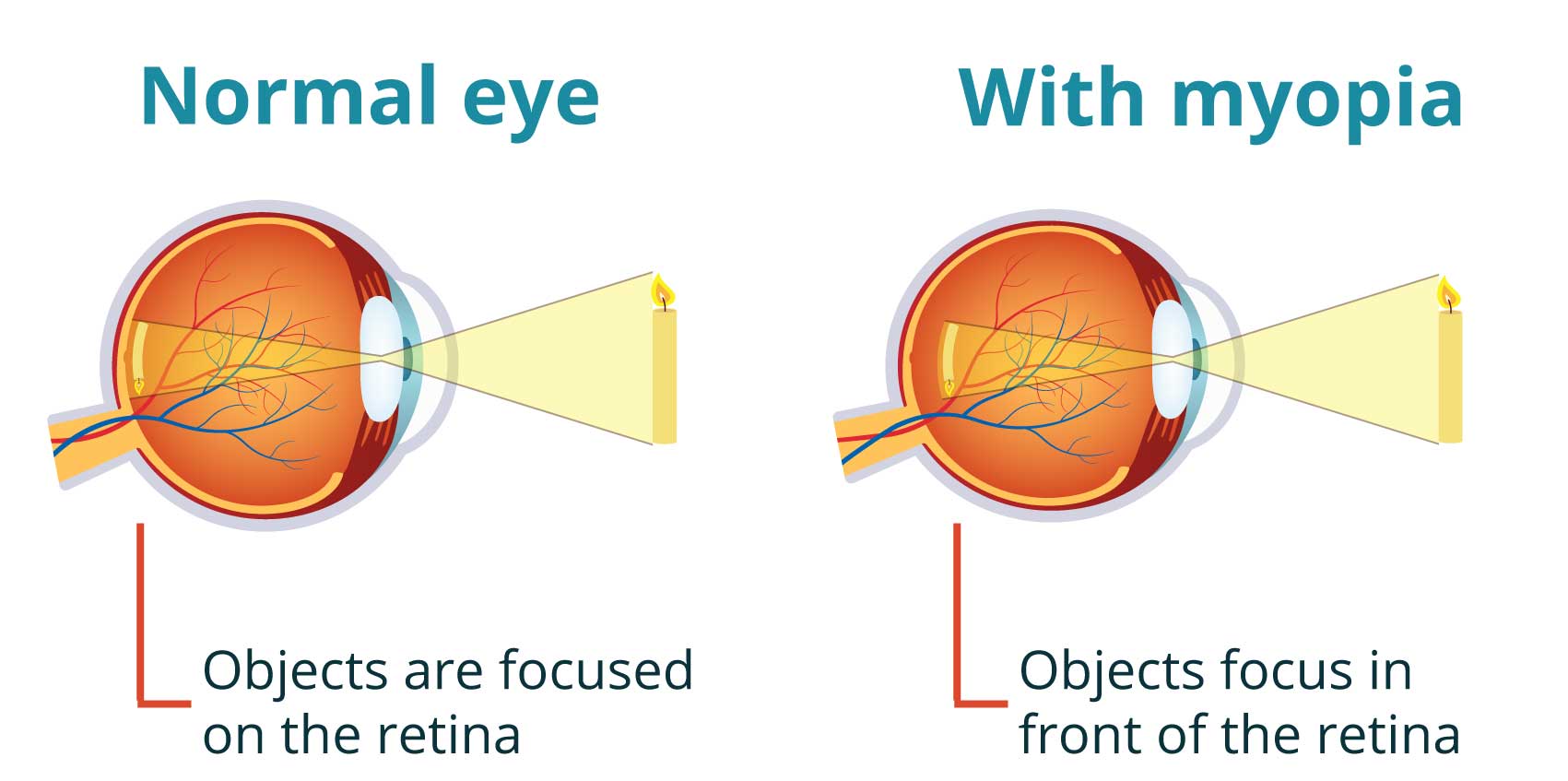Myopia is a condition that stops the eye focusing on distant objects, that’s why it is also known as short-sightedness.
Myopia usually happens when the eye grows slightly too long, but it can also occur if the cornea is misshapen. Because it starts in childhood it can affect education or even cause blindness, so early myopia treatment is essential.
What it looks like to have Myopia
Myopia causes far away objects to look blurry, while nearby objects appear in-focus.
When to see a Sydney optometrist about myopia
If you live in Sydney and your vision is affecting your ability to work, study, drive or play sport then you should see an optometrist at The Eye Practice.
It’s best to do this as soon as symptoms become apparent, especially for younger people. Delaying a visit to the optometrist could result in less effective treatment.
Advice about myopia
Get regular checkups
Myopia can happen gradually. In fact lots of people don’t realise their distance vision is getting worse. So regular checkups with your optometrist can detect myopia before it becomes a problem.
Adults without symptoms should have their eyes checked at least every 3 years. Children should see an optometrist at age 6-months, 3-years and then every 2 years thereafter.
Remember the risk factors
Some things increase the chances of getting myopia. These include ethnic background, time spent on computers and limited outdoor activity. People with an increased risk should seek advice from an optometrist.
Myopia Complications
Myopia can cause complications, some more severe than others. These include:
- Lifestyle impacts:
Short-sightedness can impact on the ability to work, play and enjoy sport. - Eye strain:
People with uncorrected short-sightedness tend to squint in order to bring objects into focus. This can result in damaging eye strain. - Danger when driving:
People with uncorrected short-sightedness risk injuring themselves and others in driving accidents. - Financial impacts:
Corrective lenses, glasses and follow-up treatment can be expensive. People with myopia can suffer a financial burden as a result of their condition. - Long term impacts:
People who develop myopia are at increased risk of getting other serious eye diseases as they age. These include retinal detachment, glaucoma and myopic macular degeneration, as well as developing cataracts earlier than normal.
Dr. Jim Kokkinakis can help with myopia
Dr. Jim Kokkinakis has been helping myopia sufferers in Sydney improve their vision for over 30 years. He is a Senior Lecturer at the Optometry School UNSW which means you can benefit from his knowledge of the latest research and development in the field.
If you suffer short-sightedness Dr. Kokkinakis can help. He can guide you through the treatment options, fit corrective lenses and recommend a solution tailored especially for you.






















